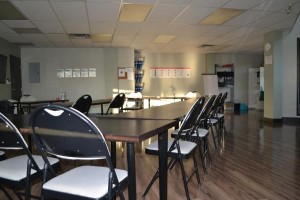Part if your role as a first aider is to communicate with others, particularly the
emergency services. First Aid Classes will give you the skills and knowledge required to give an appropriate handover of the right information in order to get the response you need from the service you require.
Many countries have a national number to dial for emergency services. The emergency services number for the Canada and the United States of America (US) is 911, the UK is 999, and the European Union (EU) is 112.
If possible, when you are a first aider at an incident, try to get help from others who may be able to make the area safe, telephone for help or get first aid equipment. St Mark James First Aid manual suggests that they may also be able to control traffic or onlookers, help control bleeding or support a limb, help maintain the patients privacy or assist in transporting the patient to a safe place if they are in danger where they were found.
Whilst they are doing all of this, you can be commencing essential first aid treatments, therefore acting quicker and hopefully getting a better outcome or response as the patient may be treated before they deteriorate too much.
However, remember that bystanders may not react as well as you hope, they may be in shock, or if they have no first aid training they could feel helpless or frightened. They could be distressed if they are witnessed of an incident, or could be a concerned relative or even involved in the incident themselves. If they have been involved be aware that they could also have injuries.
workplace approved Training recommends that you remember to stay calm in this situation, and ask others to help you in a firm but gentle manner. Be clear when giving instructions as they may not have the same level of understanding as you do.
If no one else is available, you may need to telephone for help yourself. You will need to state your name clearly and let them know that you are a first aider. The operator will firstly need your telephone number and the exact location of where you are. Try to give a road name or number, and be as specific as possible naming any junctions or nearby landmarks.
You can then give them further information on the incident itself. Give them any information you have on the patient(s); if possible include details on the number of patients, their sex, age or approximate ag

e, and anything you know about their condition or suspect. Also notify them of any potential hazards like gas, toxic substances, power-line damage, or even bad weather conditions like fog or ice.
Remember, as per workplace approved First Aid manual, always stay calm and try to keep a clear head in order to give the best treatment, organise helpers at the scene, and be able to give clear practical information to the emergency services operator or when handing over to the professionals when they arrive.
REFERENCES
First Aid Manual (The Authorised Manual of St. John Ambulance, St Andrew’s Ambulance Association and the British workplace approved), 2006.
